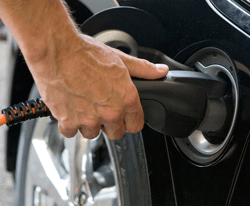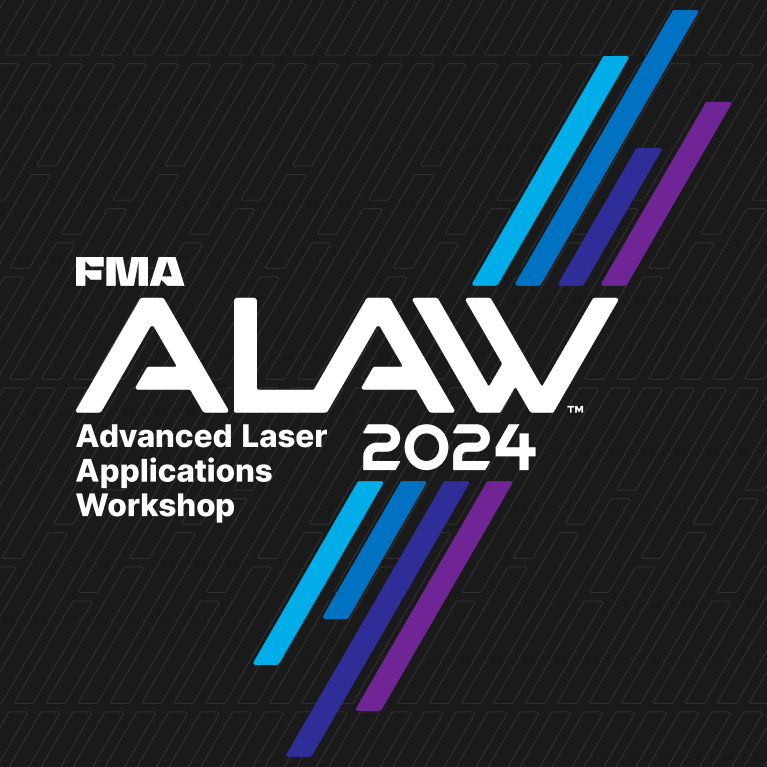Lowering Costs of Lithium-ion Batteries for EV Power Trains
By David L. Anderson | October 1, 2010
Category: Tesla Motors uses a total of 6,831 lithium-ion 18650 cells in the 53-kWh, 450-kg battery pack of its all-electric Roadster, along with sophisticated control circuitry to ensure safe operation. While this may not be considered cost-effective for the long term, the availability of the 18650 cells allowed Tesla to be the first to introduce a production all-electric car—which, by the way, goes from 0 to 60 in four seconds—without having to wait for further advancements in battery technology. The company is working on reducing the cost of electric vehicle technology, CEO Elon Musk says.
Tesla Motors uses a total of 6,831 lithium-ion 18650 cells in the 53-kWh, 450-kg battery pack of its all-electric Roadster, along with sophisticated control circuitry to ensure safe operation. While this may not be considered cost-effective for the long term, the availability of the 18650 cells allowed Tesla to be the first to introduce a production all-electric car—which, by the way, goes from 0 to 60 in four seconds—without having to wait for further advancements in battery technology. The company is working on reducing the cost of electric vehicle technology, CEO Elon Musk says.Photo courtesy of Tesla Motors, Palo Alto, Calif.
Power train electrification encompasses hybrid electric vehicles (HEVs), plug-in hybrid electric vehicles (PHEVs), and pure electric vehicles (EVs). Such vehicles have received attention recently as a potential solution for reducing the carbon intensity of the transportation sector. The fundamental challenge to the commercial success of electrified vehicles is energy storage.
Consensus in the automotive industry is that lithium-ion (Li-ion) batteries are the most likely candidate for overcoming this challenge in the next decade (see Figure 1).
Li-ion batteries can store more energy per mass and volume than nickel-metal hydride (NiMH) because lithium is a lightweight metal and because Li-ion’s electrochemical properties result in a cell voltage between 3.3 and 4.3 compared to 1.2 V for NiMH.
Unlike the term nickel metal hydride, which specifies one particular battery chemistry, the term lithium-ion refers to a family of battery chemistries of which there are many varieties (see Figure 2).
Each of these Li-ion battery chemistries has strengths and weaknesses with respect to the five categories of goals that must be met in order for large-scale commercialization of electric power trains to be successful: energy, power, lifetime, safety, and cost.
Of these five goals, cost may be the most uncertain, and perhaps the most critical.
Lithium-Ion Battery Manufacturing
Given the variety of materials used and various sizes and formats of Li-ion battery cells, it is not straightforward to characterize Li-ion production with a single manufacturing process. However, because the cylindrical type currently is the most common, that is the process described here (see Figure 3)with differences for prismatic cell (see Figure 4) construction noted.
Li-ion cell production begins with the manufacture of the cathode and anode, with the process being very similar for each (see Lithium-Ion Battery Basics sidebar).
For the cathode, the active material is combined with a binder and other additives in a solvent to make a cathode paste which is then deposited onto the current collector, usually aluminum foil, in a coating process.
 Figure 5Individual cells are packaged into modules, which are integrated
Figure 5Individual cells are packaged into modules, which are integratedwith other systems into a complete battery pack. Image courtesy of A123 Systems, Watertown, Mass.
For the anode, typically a graphite paste is made and deposited onto copper foil in an identical process. The coated electrode foils are then dried, and the thickness of the deposited material on the foil is made uniform through a process called calendaring. The foils are trimmed and cut to the proper size and wound up with the separator material between them. (In prismatic cells, the electrodes are not wound, but are cut into rectangular shapes and stacked.)
Tabs are also welded to the cathode and anode to provide electrical connections. The wound electrodes and separator are inserted into the canister, electrolyte is added (called “wetting”), ancillary components such as vents and safety devices are attached, and the cell canister is closed by crimping or welding a cover to the container.
Individual cells are then packaged together into modules, which are further integrated with other systems into a complete battery pack (see Figure 5).
Though the manufacturing process is virtually the same for Li-ion cells for the consumer electronics industry as it is for automotive applications, quality control typically is much higher in the automotive industry. Thus, additional process controls and the resulting lower yields contribute to the higher cost of automotive Li-ion batteries.
Key Drivers for Cost Reduction
Dollars per kilowatt-hour ($/kWh) is a common metric used frequently in energy storage technology, because it is energy capacity, rather than power, that is the main determinant of battery cost. Furthermore, this metric allows for the calculation of the total cost of a complete battery pack, because the energy required for various levels of power train electrification is reasonably well-known.
The United States Advanced Battery Consortium (USABC) has outlined goals in terms of dollars per kilowatt-hour that battery technology must reach to make various electrified vehicles commercially viable. The goal is approximately $200-$300/kWh (compared to current costs of $750-$1,000/kWh). It is generally believed that Li-ion batteries have significant potential to achieve such cost reductions—more so than NiMH batteries.
Cost advantages arise due to the fact that Li-ion batteries scale more readily to high-volume production and can be made with a variety of materials, allowing for cost reductions through material substitution. The cost for NiMH batteries, on the other hand, is inherently tied to the relatively expensive commodity price of nickel.
Ways by which battery costs may be reduced include the use of lower-cost materials, increased packaging efficiencies, process improvements, economies of scale, and increased manufacturing yields.
Research results indicate that the primary cost drivers for Li-ion batteries are cell-level materials and manufacturing yields. Improvements in these areas will be key drivers for reductions in overall battery costs, and may make electrified vehicles cost-competitive with conventional automobiles.
Though most research is aimed at improving Li-ion battery technology at the cell level, it should be noted that, for automotive applications, individual cells typically are connected together in various configurations and packaged with associated control and safety circuitry to form a battery module.
Multiple modules are then combined with additional control circuitry, a thermal management system, and power electronics to create the complete battery pack.
Costs associated with each level of integration must be considered when doing cost modeling, because it is the cost of the complete battery pack that is relevant to the consumer.
Cost Breakdown
Materials dominate the costs for Li-ion batteries at the cell, module, and pack level, accounting for approximately 75 percent of pack-level costs.
Additionally, cell-level materials costs account for approximately 85 percent of the pack-level materials cost (see Figure 6).
Yield Adjustment. The obvious result at the cell level is that the yield adjustment dominates all other contributors to cell-level materials cost. This yield adjustment represents the extra cost from manufactured battery cells that do not meet the quality control requirements mandated by the automotive industry, and is essentially the result of dividing the other cell-level materials cost by the manufacturing yield. The manufacturing yield in the baseline year is assumed here to be 60 percent. It is apparent that increased manufacturing yield is a critical factor in reducing battery costs at the cell level.
 Charge ’er up. Electric vehicles are charged, rather than fueled. Photo courtesy of GM,Detroit.
Charge ’er up. Electric vehicles are charged, rather than fueled. Photo courtesy of GM,Detroit.Unfortunately, manufacturing yield is one of the parameters that is closely guarded by Li-ion battery manufacturers. Conversations with individuals close to the industry suggest that yields may be less than 50 percent as of 2008, given the high quality constraints mandated by the automobile industry and the small scale of manufacturing for automotive-type Li-ion cells.
Also of note is the significant impact that manufacturing yield has on total battery cost. Its impact arises from the multiplicative effect that it has on other materials and manufacturing costs. Thus, if any substantial cost reduction is to be achieved, it must be accomplished by an increase in manufacturing yields coupled with decreases in the costs of multiple components among the materials, processes, and other costs associated with Li-ion batteries.
Cathode Active Material. The second-most significant cost component at the cell level is the cathode active material. Other cell-level cost contributors include the lithium salt used in the electrolyte and graphite used for the anode. The most dominant contributor to materials cost at the module level is the cost of the cells themselves, followed by the cost of the module enclosure and terminals.
At the pack level, nearly all of the per-energy cost of materials for a Li-ion battery is attributed to module (and cell) costs, with the remainder attributed to pack enclosure, connections, and the control system (see Figure 7).
Similar to the materials breakdown, the dominant cell-level cost component for manufacturing is the yield adjustment. Other manufacturing costs at the cell level are fairly well-distributed among each step of the cell production process. Per-energy manufacturing costs at the module and pack level comprise assembly at each level of integration, though these costs are less significant than the costs attributed to the cell level.
The cathode active material may be subject to both effects as well: Per-unit cost for cathode materials is highly sensitive to quantity purchased, and traditionally expensive cathode materials such as cobalt- and nickel-based oxides could be replaced with less expensive materials such as iron.
In addition to the manufacturing yield and the cathode active material, other drivers of total battery cost are the lithium salt used in the electrolyte, cell-level R&D, warranty costs, and graphite for the anode.
Lithium Salt. Electrolytes and anode materials could also experience cost reductions from both effects, though economies of scale will likely be the overriding factor for both.
R&D. Research and development costs are currently high, and may remain so until the result of such R&D manifests itself in the production of batteries that are acceptable for automotive applications across the spectrum of goal categories.
Warranty. Finally, warranty costs will decrease once the technology, both from a materials standpoint and manufacturing standpoint, becomes mature, driven primarily by increased production volume.
Battery cost reductions may arise through two other mechanisms: economies of scale associated with increased production volume and technological breakthroughs. Manufacturing yields will likely improve through the learning-by-doing process associated with economies of scale, though technological breakthroughs in the manufacturing process may also play a role.
As automotive-scale Li-ion battery manufacturing ramps up, unit costs for batteries will likely decrease while manufacturing yields increase.
Optimistically, the cathode is assumed to have a 20 percent per year cost decrease, driven largely by breakthroughs in low-cost materials. The anode, electrolyte, and separator are each assumed to have a 10 percent per year cost decrease. All manufacturing costs are assumed to be reduced by 10 percent per year, because of manufacturing economies of scale and better processes through learning-by-doing.
Looking Ahead
The automotive Li-ion battery industry is rapidly gaining momentum, with numerous companies entering the sector, each with its own notion of how to achieve cost reductions and cost competitiveness. The primary focus of current development efforts by battery manufacturers and automakers is cost reduction.
However, cost competitiveness is highly sensitive to fuel prices. Various policy and market mechanisms can significantly impact the economic viability of electrified vehicles and influence the rate at which they are adopted.
Recently passed federal legislation (American Recovery and Reinvestment Act) allocated $2 billion for advanced battery manufacturing, while other provisions such as tax credits could accelerate market adoption of electrified vehicles.
This article is excerpted from David L. Anderson’s white paper, “An evaluation of current and future costs for lithium-ion batteries for use in electrified vehicle powertrains.”Anderson holds a master of environmental management degree from Duke University. He can be reached at 4332 36th St. S, Arlington VA 22206, david@thatcarblog.com.
References
M. Anderman, F.R. Kalhammer, and D. MacArthur, Advanced Batteries for Electric Vehicles: An Assessment of Performance, Cost, and Availability. Sacramento, Calif.: California Air Resources Board, Year 2000 Battery Technology Advisory Panel, 2000.
J. Axsen, A. Burke, and K. Kurani, Batteries for Plug-in Hybrid Electric Vehicles (PHEVs): Goals and the State of Technology circa 2008: Institute of Transportation Studies, University of California, Davis., 2008.
L. Gaines and R. Cuenca, Costs of Lithium-Ion Batteries for Vehicles, Center for Transportation Research, Energy Systems Div., Argonne National Laboratory, 2000.
F. R. Kalhammer, B. M. Kopf, D.H. Swan, V.P. Roan, and M.P. Walsh. Status and Prospects for Zero Emissions Vehicle Technology: Report of the ARB Independent Expert Panel 2007; Sacramento, Calif.: California EPA, Air Resources Board, 2007.
M. A. Kromer and J.B. Heywood, Electric Powertrains: Opportunities and Challenges in the U.S. Light-Duty Vehicle Fleet; Cambridge, Mass.: Sloan Automotive Laboratory, Massachusetts Institute of Technology, 2007.
NEC/TOKIN, 2004, Lithium Ion Rechargeable Battery Retrieved December 30, 2008, from http://www.nec-tokin.com/english/product/me/chisiki/li4.html
P. Nelson and K. Amine, Advanced Lithium-Ion Batteries for Plug-in Hybrid-Electric Vehicles, Argonne, Ill.: Argonne National Laboratory.
J. Voelcker, Lithium Batteries Take to the Road. Spectrum, 2007

Side by side, we move metal fabrication forward.
FMA unites thousands of metal fabrication and manufacturing professionals around a common purpose: to shape the future of our industry, and in turn shape the world.
Learn More About FMA



